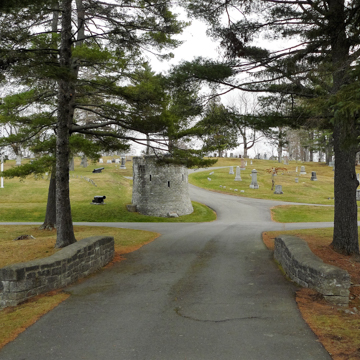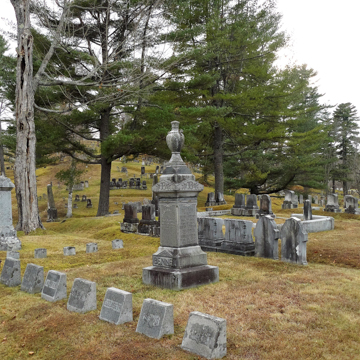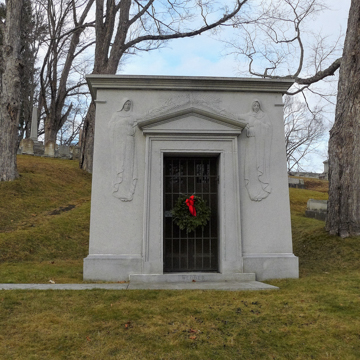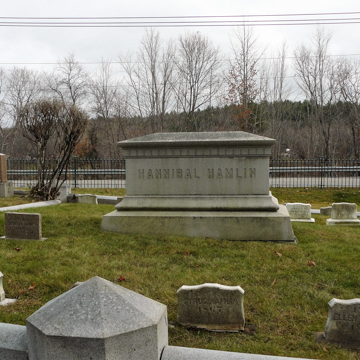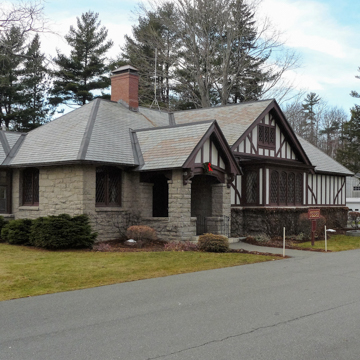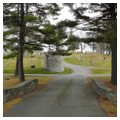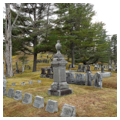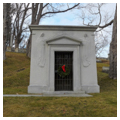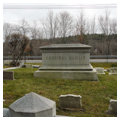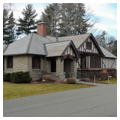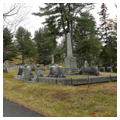Propelled by a thriving lumber industry and subsequent wealth, Bangor launched an ambitious civic improvement program in 1834, beginning with a rural cemetery modeled on Boston’s verdant Mount Auburn. Accordingly, the city founded the Bangor Horticultural Society, which purchased a fifty-acre tract close to the Penobscot River on a hillside outside the city. The Society retained local architect Charles G. Bryant to design the cemetery in the romantic style of Mount Auburn. Bryant divided the parcel into two parts: one for a burial ground and another for a horticultural garden. Completed in 1836, Mount Hope provided Bangor urbanites the chance to take leisurely carriage drives, stroll the serpentine pathways, and have Sunday picnics in a parklike setting.
Located on Mount Hope Hill, the cemetery is an idyllic place dotted with landmark tombs and such structures as the lodge, a pleasant turn-of-the-century half-timbered administration office and resting place for visitors designed by Bangor architect Wilfred E. Mansur. In 1840 the family of General Samuel Veazie erected a below-ground tomb marked by a handsome Greek Revival monument ornamented with wreaths and capped by an urn. Like many of the cemetery’s tombs, it is enclosed by an elaborate cast-iron fence and gate.
Tombs and fences in the historic section of the cemetery feature popular nineteenth-century Victorian death motifs of urns and weeping willows. The Fred E. Bradford gravestone (1861) exemplifies the rich Victorian carved iconography found throughout the cemetery: carved in the twenty-three-year-old’s gravestone is a depiction of death breaking the column of life, a symbol of an early death. One of Mount Hope’s most elaborate Victorian landmarks, the Jonathan Eddy monument, features Grecian wreaths and anthemions as well as highly stylized Corinthian columns topped by a draped urn. Among the notable figures interred at Mount Hope is Hannibal Hamlin (1891), Lincoln’s first vice president, whose rectangular granite monument seems somewhat restrained.
Although the cemetery has since expanded to 300 acres, the bucolic setting of the original plan has been retained.
References
Irent, Trudy. Mt. Hope Cemetery, Bangor, Maine: The Complete History. Charleston, SC: The History Press, 2012.
Holleran, Michael. Boston’s Changeful Times: Origin of Preservation Planning in America. Baltimore: Johns Hopkins Press, 2001.
Sloan, David Charles. The last Necessity: Cemeteries in American History. Baltimore: Johns Hopkins Press, 1991.














